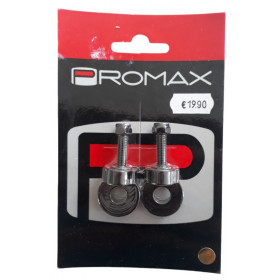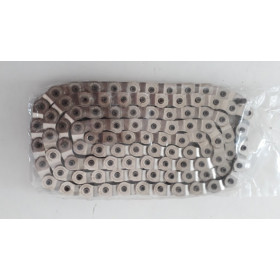-
 New product -50%Promax fixie bike chain tensioner
New product -50%Promax fixie bike chain tensioner- €9.95
- €19.90
-
 New productBmx single speed fixie chain The shadow Conspirancy
New productBmx single speed fixie chain The shadow Conspirancy- €30.99
Showing 1-2 of 2 item(s)
Track bike chains are essential components that transmit power from the pedals to the rear wheels. Here is a description of their function, their characteristics, the standards and the different types of chains for track bikes:
Function :
1. Power transmission:
Track bike chains transmit the power generated by the rider's pedaling from the cranksets to the rear wheel hub, propelling the bike forward.
2. Maintaining tension:
They maintain the proper tension to ensure efficient power transfer and reduce the risk of derailment while pedaling.
Features :
1. Number of links:
Track bike chains are usually made up of a number of links which determine their overall length. The number of links may vary depending on the number of speeds of the bike and the geometry of the frame.
2. Width:
Track bike chains have a specific width that matches the width of the teeth on the bike's chainrings and sprockets. It is essential that the chain is compatible with the transmission components for optimal operation.
3. Material:
Track bike chains are typically made from alloy steel, although some high-end versions may be reinforced with lighter materials, such as titanium or carbon, to reduce weight while maintaining durability.
4. Anti-corrosion treatment:
Some chain models are treated with special coatings to resist corrosion, extending their life and reducing maintenance requirements.
Standards:
No chain:
Chain pitch, also known as link pitch, is the distance between two adjacent rivets on the chain. There are different chain pitch standards, such as 1/8 inch (3.175 mm) and 3/32 inch (2.38 mm), which depend on the size of the chainrings and sprockets used on the bike.
Different types of chains for track bikes:
1. Single speed chains:
These chains are designed for track bikes with single drivetrains, without a rear derailleur. They are often sturdier and wider than multi-speed chains, providing greater wear resistance and durability.
2. Multi-speed chains:
These chains are designed for track bikes with multi-speed drivetrains, with a rear derailleur. They are generally thinner and lighter than single-speed chains, allowing for smoother shifting and better pedaling efficiency.
In summary, track bike chains are crucial elements for power transmission and proper operation of the bike. With specific features such as number of links, width and material, as well as manufacturing standards, they contribute significantly to the bike's performance and durability on the track.
